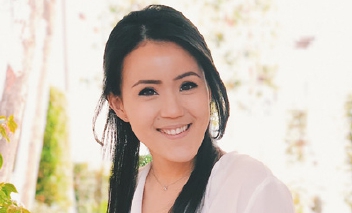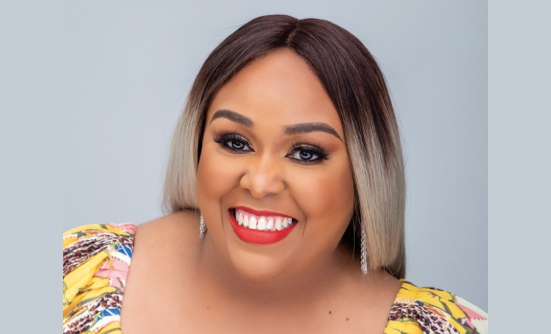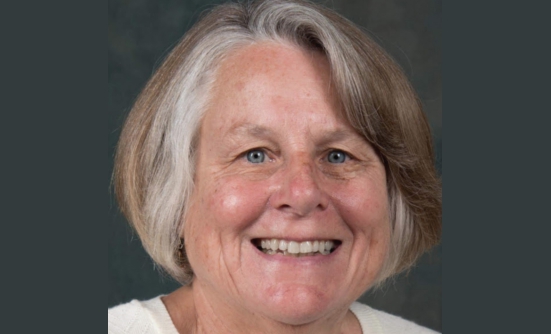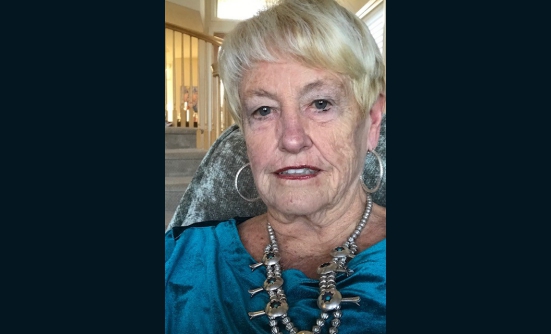
Sharon Kim knew life would never be the same after her mother’s cancer diagnosis. She never imagined how that one diagnosis would change the lives of thousands of patients.
Doctors diagnosed Ms. Kim’s mother, Ruby, with uterine sarcoma cancer in 2013. Ms. Kim and her 2 older siblings spent the next year caring for their mother in their home state of Hawaii. They watched helplessly as she underwent cancer treatments and eventually hospice care. Ruby passed in 2014, when Ms. Kim was 23 years old. She didn’t realize it at the time, but her mother’s passing would propel her life in a new direction.
Finding Control After a Cancer Diagnosis
In the wake of her mother’s death, Ms. Kim searched for a way to deal with her grief. She tried to process the emotions she felt during her mother’s diagnosis and treatment.
“I didn’t know how to pinpoint what I was feeling when we were in the situation,” she says. “But looking back, I realized we all struggled with the loss of control. My siblings and I felt like there was very little we could do except sit back and watch our mother go through this. We felt helpless.”
Everything shifted when the doctors explained that nothing further could be done for Ruby. The news felt like a stab to the heart. They couldn’t change the clinical outcome, but Ms. Kim and her siblings decided it was time to take some control back. They began writing down their mother’s mood, diet, and symptoms. This practice continued during their mother’s hospice care.
“Tracking offered us a chance to see some patterns and progress,” Ms. Kim says. “We were able to point out even small improvements to my mom. It motivated her and lifted her spirits.”
For Ms. Kim and her siblings, the tracker brought them together. Since they took turns caring for their mother each day, the notes made it easy to communicate. The tracker alleviated any tension related to their mother’s care. Ms. Kim and her siblings were free to enjoy their time with their mother.
The Need for Cancer Planning
Ms. Kim saw how simply tracking her mother’s habits and symptoms gave her a sense of control and relieved some of her family’s stress. She realized she might be onto something.
According to the National Cancer Institute, people who have effective and healthy coping strategies in place to manage stress tend to have “lower levels of depression, anxiety and symptoms related to cancer and its treatment.”1 Ms. Kim recognized that patients and families facing cancer need a planner created specifically for their circumstances.
“The amount of information you take in when dealing with cancer is overwhelming,” she says. “You may not realize it right away, but you need somewhere to put it down. Trying to manage it all inside is not healthy.”
Ms. Kim wanted a way for patients and families to track every aspect of their cancer experience, including their emotional state. “With my mom, we focused on the physical and medical aspects of what was going on. Yet it was the mental and emotional health that was the biggest battle for her,” she says. “We didn’t know how to touch on those subjects.”
After much research and a successful Kickstarter campaign, Ms. Kim created CanPlan in 2016. The all-in-one planner has space to record all aspects of cancer care, including appointments, symptoms, test results, diet, and sleep. She also included plenty of room for journaling, positivity exercises, and reflection.
“It’s really a holistic health journal,” Ms. Kim says. “CanPlan incorporates both physical and emotional tracking. It gives patients and their families a way to deal with information and changes as they happen. My goal is for this planner to save everyone time, stress, and energy.”
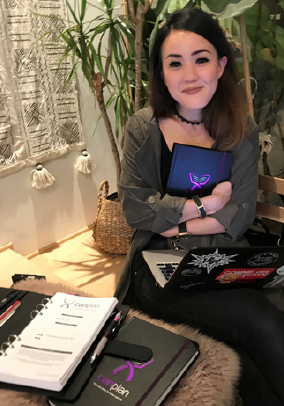
One of the biggest CanPlan moments for Ms. Kim came in July 2018, when she received a phone call from a marketing executive at Clovis Oncology. Clovis produces Rubraca, an FDA-approved medication for patients with ovarian cancer.
Clovis wanted to offer their patients with ovarian cancer a way to manage their journey and medications. When they came across Ms. Kim’s CanPlan, they saw an opportunity to put cancer planning into the hands of their patients. Ms. Kim saw a chance to help thousands of women manage their cancer experience.
“I’m so grateful for the opportunity to help patients with ovarian cancer, and I’m proud of the influence my planner may have on their journey,” Ms. Kim says. “Clovis has been a game changer in terms of our direction. They got us thinking about customization and possibilities for CanPlan.”
Ms. Kim worked with a team at Clovis to completely customize her planner for their patients. Clovis provides its version of CanPlan free to any patients taking Rubraca. The planner helps patients track their medication use, record symptom progress, and note any side effects.
Lessons in Cancer Planning
Ms. Kim introduced the fourth version of CanPlan in July 2019. She relies on the feedback from patients and families to update and improve her design. She has also learned valuable lessons about how to get the most from cancer planning:
- Record daily if possible.
Ms. Kim left the CanPlan pages undated so that patients can record information as often as they like. However, she recommends that you try to track each day. “There are so many important things happening each day that can indicate what’s going on in your body,” she says. “Being aware of even the subtlest of things, like the color of your stool, could provide a lot of insight to your doctor.” - Share your planner with your care team.
Sharing the information recorded in your CanPlan with your doctors can be time-saving and helpful. Your doctor may notice details you have missed or be able to guide you on the important symptoms to track. You’ll feel prepared with all the information your doctor might request, reducing stress and anxiety before appointments. With all your symptoms logged, you can determine what questions to ask and have a place to record the responses. - Don’t ignore your emotions.
Ms. Kim believes that if you identify and recognize your feelings, it will be easier to alleviate anxiety and negative thoughts. Journaling or doodling can be a great outlet. At the very least, Ms. Kim recommends reading a positive quote each day. “During the cancer journey, it can be so hard to find even the smallest bit of light,” she says. “Having a prompt or quote there in your planner each morning can help you focus on a positive thought.” - Write it down.
Ms. Kim gets asked all the time why she hasn’t created an electronic planner. “There are many benefits that come from physically writing down your information and feelings,” she says. “It can be very healing, and you have so much more connection to the words you are writing.” She hopes to create a complementary app for CanPlan at some point. But she stresses the importance of taking a step back from technology and distractions to really focus on your cancer journey. - Find a community.
Through the CanPlan Facebook group (called The CanPlan Fam), Ms. Kim learned the value of a support community for families coping with cancer. Patients and their families meet there to ask questions, post updates, and offer support. “You are not fighting this alone,” she says. “I’ve learned through CanPlan that you have a community and an army of people ready to help you with whatever you are going through. Everyone dealing with cancer should have a support community.”
The Future for CanPlan
Ms. Kim could not be more excited about the future of CanPlan. There are almost 10,000 patients using CanPlan currently. The business continues to grow through relationships with small retailers and a larger partnership with Clovis Oncology. Clovis approached Ms. Kim about customizing CanPlan for their patients with ovarian cancer. (See “Clovis & CanPlan” to read more about the partnership.)
Inspired by Clovis, Ms. Kim has dreams of customizing the planner even further. She is researching the possibility of extension packs for CanPlan. Patients could add these additional pages to customize a planner for their needs and tumor type. Her hope is that together, CanPlan and its community of patients will eventually design the ultimate planners for cancer patients and survivors.
The Road to Healing
Looking back, Ms. Kim believes that everything in her life has led up to her work with CanPlan. From her psychology degree to her first job as a marketing manager for a start-up company, she has been gathering the knowledge and experience needed to create and oversee CanPlan.
“Even the seemingly trivial jobs, like my position at my college mailroom, helped me to understand the ins and outs of efficiently packaging, prepping, and shipping products as an e-commerce business,” she says. “It just goes to show that my past was preparation for my purpose.”
Ms. Kim believes her purpose is to help patients and their families. That purpose and the work she does keeps her connected to her mom.
“This entire journey has been so meaningful to me, and so fulfilling in ways that no other job could be,” Ms. Kim says. “My mom would love the fact that we are continuing her story. For me, she is alive and present in every CanPlan that helps someone.”
To learn more about CanPlan or order a planner for yourself or a loved one, visit mycanplan.com.
Reference
- National Cancer Institute. Psychological Stress and Cancer. www.cancer.gov/about-cancer/coping/feelings/stress-fact-sheet.





